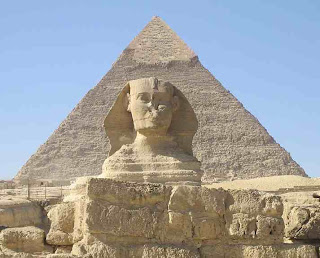At the age of thirty, he began to teach at Mytilene; he was later was forced to leave for causing strife. Since he could no longer teach at Mytilene, Epicurus founded a school in Lampsacus.Epicurus stressed, to his students, the importance of friendship as an "ingredient" of happiness. His school reflected this philosophy.
Epicurus' philosophy is known as the "philosophy of pleasure". His philosophy consisted of four major ideas:
"1) Let no one be slow to seek knowledge and understanding when they are young,
nor be quick to tire of the search for wisdom when they grow old. For no age is
too early or too late to be concerned with the health of the mind. And to say
that the time for philosophy has not yet come, or that it is passed and gone, is
like saying that the time for happiness is not yet come, or that it is gone for
ever.
2) By the love of true philosophy every troubling and painful
desire is destroyed. Vain is the discourse of that philosopher by which no human
suffering is healed.
3) We must laugh and philosophize at the same time
as we do our household chores and go about our other business, and never stop
bringing out the sayings of the true philosophy.
4) You must become a
slave to philosophy if you would gain true freedom."(source)
Epicurus believed that in order to have an upright life, you must pursue pleasure. He believed that in order to live a pleasant life, you must live wisely,honorably,and justly; and in order to live wisely,honorably, add justly, you must live pleasantly. If any these things were missing, a man could not live an upright life.
" The essential doctrine of Epicureanism is that pleasure is the supreme good
and main goal of life. Intellectual pleasures are preferred to sensual ones,
which tend to disturb peace of mind. True happiness, Epicurus taught, is the
serenity resulting from the conquest of fear of the gods, of death, and of the
afterlife. The ultimate aim of all Epicurean speculation about nature is to rid
people of such fears."(source)
Epicurus did not deny the existence of the gods, but he viewed them as indestructible.He believed that it was selfish to ask for something, that would benefit yourself, from the gods. He also believed that dreams had no divine character, or prophetic power. he believed that dreams came from images that were appealing to your senses.
Pain: The removal of all pain, is the boundary of pleasure. When pleasure is present, there is an absence of pain of the body and mind. Happiness: the main part of happiness, is the happiness that is under our own control.Epicurus also believed that in order to be truly happy, you must free your self of business and politics. All these concepts of Epicurieanism are very strange and some are even contradictory.
Nardo, Don. Living in Ancient Greece. Farmington Hills MI: Green Haven Press, 2004.
Nardo, Don. Lost Civilizations:The Ancient Greeks. San Diego Ca: Lucent Books, 2001.




.jpg)



